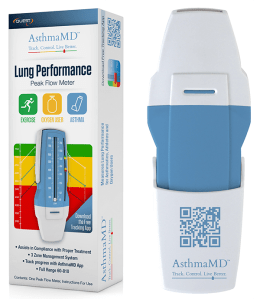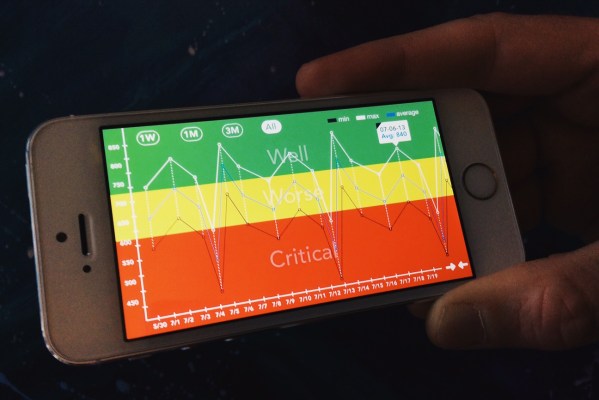When TechCrunch first covered AsthmaMD in 2010, the medical tech startup’s goal was to gather data that would help researchers better understand when attacks are more likely. Since then, the startup has shifted its focus to a more commercially viable business model that will allow it to continue gathering data while helping more asthma sufferers, who make up 12% of the U.S. population.
Founder Dr. Sam Pejham and Salim Madjd, the startup’s app designer, say that AsthmaMD 3.0, the company’s latest product, is “essentially a brand new app coded from scratch and it’s our most significant release yet.” The startup is self-funded and currently raising its seed round.
The platform now includes the startup’s patent-pending asthma action plan, or a treatment plan for patients that is developed with their doctors. It also has an integrated medication reminder system and the ability to track and log asthma symptoms from multiple devices, with data saved to AsthmaMD’s secure cloud platform. AsthmaMD’s peak flow meter, a key part of its monetization strategy, is now available in certain Walgreens and CVS stores.
“We had to find a way to continue providing the app for free while running a business. We pivoted and analyzed various options that would still allowed us to stay true to our mission of modernizing asthma care,” Pejham and Madjd said in an email.
AsthmaMD 3.0 makes it easier for physicians to create easy to follow action plans, or a written plan that is designed for each patient to guide day-to-day care, as well as management of worsening symptoms.
Though all asthma patients should have an action plan, only 50% in the U.S. currently do, says Pejham. Creating one is not only time-consuming for doctors, but they also have few ways of making sure it is being followed or used correctly. Many patients are asked to keep a paper journal, but they tend to only pay attention to their symptoms when they are ill. While there are other asthma apps, Pejham says AsthmaMD wants to differentiate by making it easier for patients to check in regularly.
AsthmaMD 3.0 not only makes it simpler for doctors to create individual asthma plans, but the platform then breaks down into interactive steps for patients to follow.
“Eighty percent of asthmatics do not have proper education and understanding of the differences between control and rescue medications. With AsthmaMD 3.0 we made education an implicit part of the experience. With every opportunity we are delineating the differences in these medications,” Pejham and Madjd said.
“Over 55% of asthmatics are unaware their asthma is not well controlled, which has shown to have direct correlation of increase risk of hospitalization, urgent medical needs, and reduced quality of life,” they added.
Patients can send data to their doctors, who then track how effectively each action plan is working. This also allows them to manage their time more effectively. Pejham says family members also gain extra assurance from AsthmaMD.
“As an unexpected benefit, among our patients, the continuous monitoring has been received well by the parents of asthmatics, especially those who are away from their children and can use the platform to remotely monitor their children, providing them with peace of mind.”
AsthmaMD now makes revenue through its peak flow meters, which measure lung function when a patient exhales into the device and are available in certain CVS and Walgreens locations across the U.S. Data from each session is also stored in the AsthmaMD 3.0 app to help patients manage their asthma better.

Though peak flow meters have been available since the 1950s, Pejham says “the innovation in this space has been lacking.” So AsthmaMD focused on increasing the accuracy of the device and education, which is accessible from a QR code on the device. The cost of using it is also covered by most health insurance companies.
“We knew we were on the right track when one of my friends was diagnosed with asthma. She was given another brand’s peak flow meter at her preferred provider organization and was sent home without any instructions. She had no idea what to do with it so she just never used it,” Pejham and Madjd said.
“With the busy schedule of healthcare providers, especially now as more people are getting insured, it’s becoming harder for healthcare providers to spend the required time to educate their patients. Even if they spend the time, the patients are likely to forget within a week or so,” they add. “Adding the QR code with the comprehensive instructional video that is always available to the asthma patients, removes a lot of the burden from physician’s busy schedule and helps asthmatic to better manage their asthma.”
